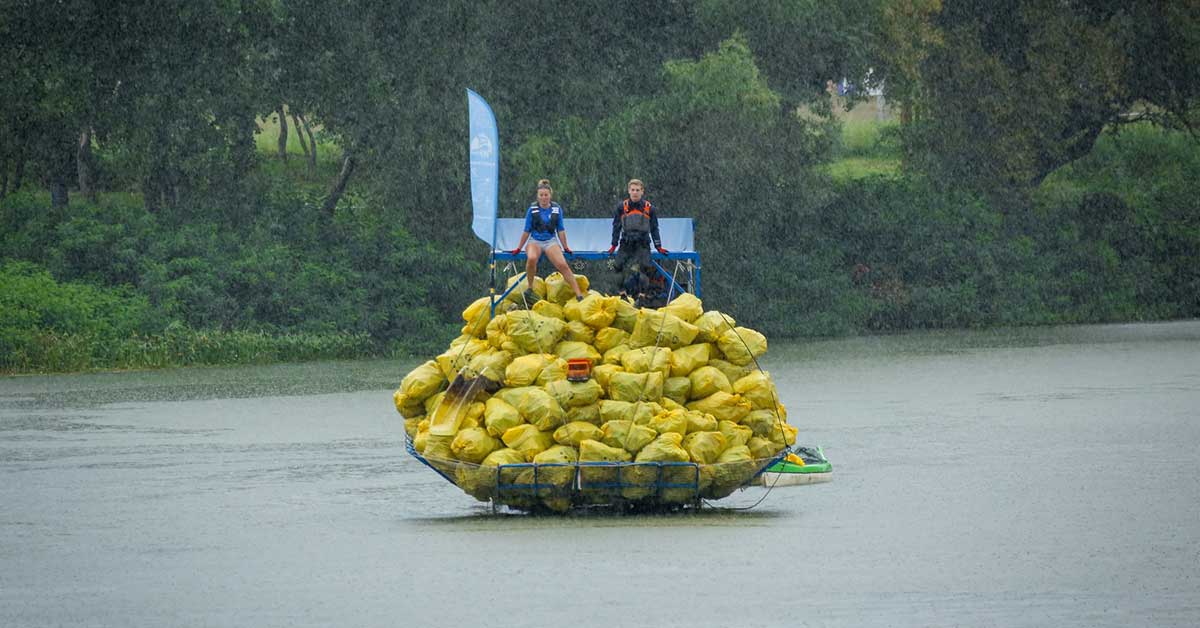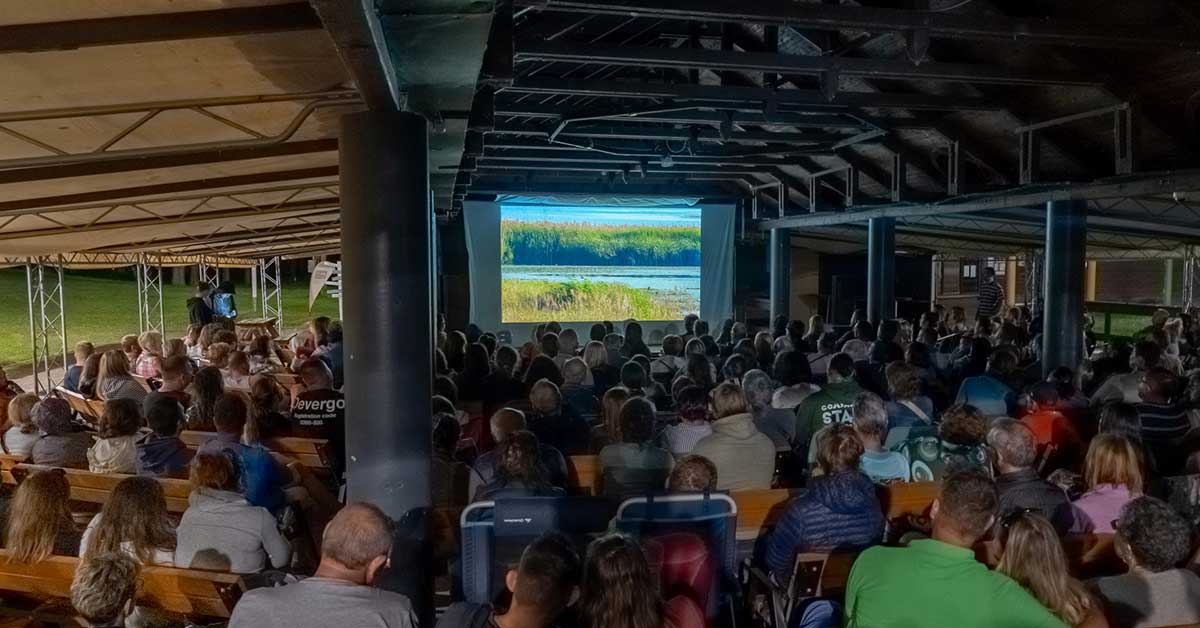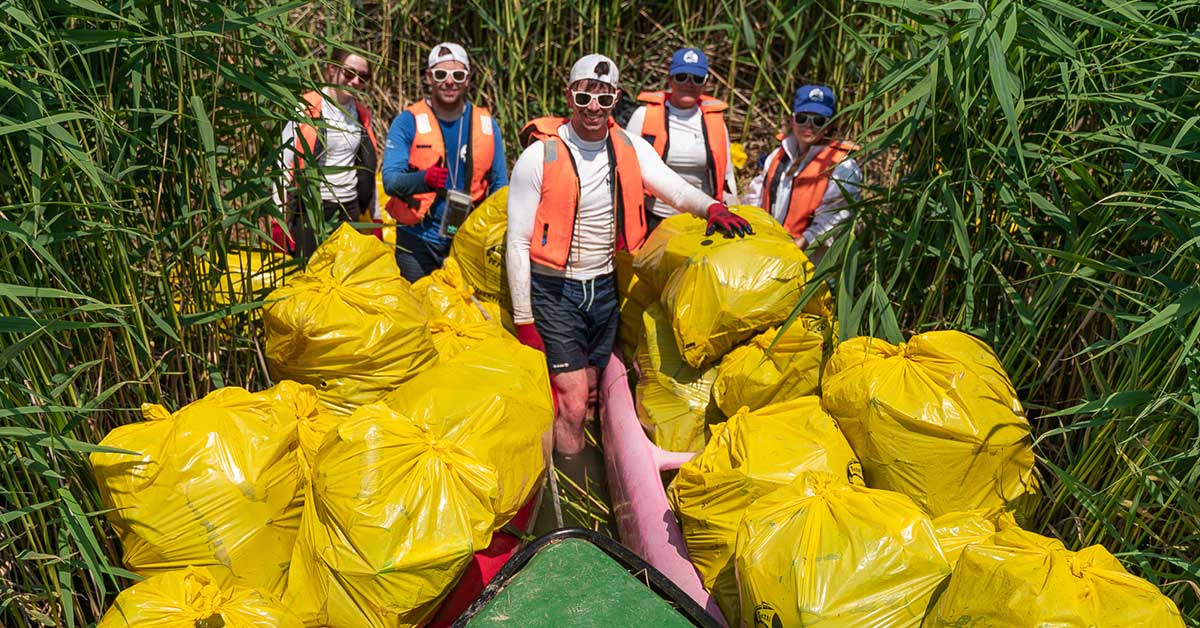
Editors note: This article is a translation of an interview from the Hungarian magazine Sokszínű Vidék, which is published in English with the permission of the magazine to be accessible to our international readers.
According to Balázs Szendőfi, destroying wetlands in Hungary should stop.
Balázs Szendőfi, whose nature films have been regularly screened on the Hungarian and international media for years, said on the internet recently that the water of the Tisza and its tributaries will be sorely missed in spring and summer, as the riverbeds have been “murdered [transformed] into canals” and separated from the landscape by embankments.
“For centuries, river floods have had their own role, regularly providing water to the Great Plain where rain is scarce. After it didn’t happen anymore, the landscape dried up within a few decades, crop yields decreased, and the land became less liveable for humans and wildlife. The damaging process is still happening today; the largest landscape of Hungary is getting dried out,” Balázs said to Sokszínű Vidék, whose article we republish below.
Enchanted by Wild-water Country
One of Hungary’s best-known nature filmmakers is a composer and music teacher by training. The versatile naturalist is a regularly published member of the Hungarian Ichthyological Society. Since 2014 he has been a fish researcher with a national fishing license for research from the Ministry of Agriculture. Balázs is currently working on several short films and five larger-scale ones.
I’m making four films in parallel, of which the “key” project is the nature film ‘Once Upon a Time in Wild-water Country,’ about the rivers of Körös and the former Sárrét [meaning ‘mudfield’; a marsh drained in the 1880s]. The movie is scheduled to premiere on 20 March 2023, and it deals with the destruction of nature caused by river regulations.”
Honesty is the most important.
According to Mr. Szendőfi, what makes it difficult to make credible films, is that it’s usually supported by those who want to have a return on their investment. He reckons that only a few nature films are free of propaganda, bias, and greenwashing. At the same time, it would be necessary for as much of such movies as possible to present real problems without compromise.
“Honesty and confrontation don’t sell; they aren’t profitable, at least according to leaders and business people. I try to refute that. Today we actually have to shoot nature films – without nature. Drastic transformations and destruction caused by humans can be seen everywhere; nature has been broken into fragments and is now scattered over a few tiny areas, which are still being cut down every day by the investors who are pushing for utilization.’ Laws and regulations are increasingly in their favor, and at the same time against what is left of nature.”
Despite all difficulties, the nature filmmaker is trying to do something for our environment in many other ways. During fish research, he carries out faunistic surveys and monitoring of small water bodies, in many cases helping to map the values of habitats that are protected already or need protection. He salvaged fish in the dried-up Szilas creek in collaboration with the Budapest Nature Conservation Protection Service.
“I provide ecological consultation; for example, in 2018, I supervised the removal of fish, crabs, and turtles and prevented their return during the draining and cleaning of the pond in Városliget [City Park – Budapest’s second largest public park, one of the first public parks of the world]. Almost 100 percent of the species involved were dangerously invasive species. Of course, the main activity is still making films for nature conservation.”
They've reshaped the landscape.
Ever since we’ve known it, the Great Plain has literally been a basin where the freshwater of the mountains was collected and stored.
“The rivers curved sharply across the flat landscape, like human intestines or brain chambers, which curve so much to function over as large a surface area and length as possible. It works similarly with rivers: 200 kilometers can accommodate up to 1,000 river kilometers – it’s 2×1,000 kilometers of richly vegetated riverbanks, where the water reaches the landscape.” said the filmmaker, adding that from the times of count Széchenyi, 1840s onwards, the landscape started to dry up systematically [István Széchenyi, a.k.a. “the greatest Hungarian” is considered one of the founding fathers of modern Hungary, reforming the country’s economy, foreign politics, sport and traffic among many others and the literal founder of the Hungarian Academy of Science, builder of the first bridge between Buda and Pest that river Danube separated].
The plan was presented as a way of improving the living conditions of the population and reducing flooding, but in reality, it was motivated by a grain trade – the Hungarian lords wanted to produce more grain in the flood plains of the rivers they had conquered so that they could get even richer.
“…we can only watch with indignation the banks of the Körös, the floods of river Tisza, Dráva, Bodrog, Hanság, etc., on which thousands of families could live happily (which are perhaps now struggling with misery), or entirely new clans could arise, by which the strength and ornament of the country could be effectively grown. What fair provinces might be gained for our country without a drop of bloodshed! And how much more would the air of our mother country become gentler and meeker if instead of reeds and clumps, where now foxes and wolves prowl, there would be meadows and smiling [happy] habitations!” István Széchenyi: Credit [published in 1830]
Rivers have been straightened, swamps and wetlands drained, and drainage canals have been built across the country. Eleven thousand four hundred forty-four kilometers of barriers have been constructed across the Carpathian Basin to prevent rivers from overflowing.
River floods have regularly supplied water to the soil of the rain-scarce lowlands. When this didn’t happen anymore, the landscape dried up, the crops got poor, and the land became less liveable for man and wildlife within a few decades.
“In the shortened, straight riverbeds, the current has accelerated. As the water cannot break laterally because of the dams, it exerts a downward force: it carries away the sediment deposited earlier, deepening the bed. The river beds have deepened by meters, which is also pulling the groundwater downwards in the landscape, leading to further drying processes.”
Balázs Szendőfi thinks we haven’t learned from past mistakes, and we’re taking further false steps by building artificial reservoirs and dams, causing many more wounds to nature. We irrigate fields that take up unrealistically high amounts of land with river water, which is one of the reasons why the water yields of many of our rivers are falling dramatically more and more often.
A three-step vision
The fish researcher believes that change will require a radical restructuring of the agricultural support system. He feels this is a sensitive subject, but it is step zero; nothing can be done without it. Monoculture farming, which destroys the landscape and nature, should not be subsidized to this extent.
Small-scale, mosaic landscape use should be encouraged to preserve forest strips and wetlands. Szendőfi envisages a three-step approach. The keywords are leaving untouched, restoration, and creation.
“Today, we want only to utilize; everything is built on, “getting pedestrianized,” “getting fountained,” and the population applauds and is happy about it. If there is a water pit at the end of a village, local leaders want to turn it into a fishing lake or a rowing course – this should not be allowed. Instead, the preservation and ecological management of natural habitats should be required and encouraged. The destruction of the reed on Lake Balaton, Lake Fertő, Lake Tisza, and river Danube should not be allowed, and further development of the coasts should be stopped. It is also time to ban logging in flood plains.” the environment has listed to-dos.
In most areas that have been ruined, nature can be “healed.” Balázs has indicated that the backwaters that do not affect settlements could be reconnected to the river. Floodplains could be increased, and dams could be moved further away.
Naturally, this would come at a cost and sacrifice of land, but it might still be less of a price and sacrifice than the summer drought of 2022. The restored floodplains could be used for grazing, mowing, and fishing in what is now poor ploughland.
“Wetlands can be created “out of thin air.” All that is needed are a designated area and a flood. There are examples of this on a small scale recently; national parks have done this in many places, and life has been revitalized. Groundwater-filled ponds can also be created; in Szada, the endangered European mud minnow is being saved in such ponds.”
Shared responsibility
According to Balázs Szendőfi, the sad state of our environment could be mitigated by a nature restoration on a European and global level. He considers self-sufficiency and any attempt to reduce the ecological footprint at the individual level to be a good thing. Still, he stresses that carbon dioxide is not the only problem.
The European Union has designated 30% of its territory for ecological restoration. This may seem a vast and unachievable commitment in the light of many economic lobbies and public influence – but still: it is merely 30 percent (not 100), only within the EU (not worldwide), and only a target, not an action. This will be too little – said the nature filmmaker.
History of water scarcity
Ever since we’ve known it, the Great Plain has literally been a basin where the freshwater of the mountains was collected and stored.
“The rivers curved sharply across the flat landscape, like human intestines or brain chambers, which curve so much to function over as large a surface area and length as possible. It works similarly with rivers: 200 kilometers can accommodate up to 1,000 river kilometers – it’s 2×1,000 kilometers of richly vegetated riverbanks, where the water reaches the landscape.” said the filmmaker, adding that from the 1840s onwards, the landscape started to dry up systematically.
The plan was presented as a way of improving the living conditions of the population and reducing flooding, but in reality, it was motivated by a grain trade – the Hungarian lords wanted to produce more grain in the flood plains of the rivers they had conquered so that they could get even richer.
Rivers have been straightened, swamps and wetlands drained, and drainage canals have been built across the country. Eleven thousand four hundred forty-four kilometers of barriers have been constructed across the Carpathian Basin to prevent rivers from overflowing.
River floods have regularly supplied water to the soil of the rain-scarce lowlands, but in the shortened, straight riverbeds, the current has accelerated. As the water cannot break laterally because of the dams, it exerts a downward force: it carries away the sediment deposited earlier, deepening the bed. The river beds have deepened by meters, which is also pulling the groundwater downwards in the landscape, leading to further drying processes.
Mr. Szendőfi thinks we haven’t learned from past mistakes, and we’re taking further false steps by building artificial reservoirs and dams, causing many more wounds to nature. We irrigate fields that take up unrealistically high amounts of land with river water, which is one of the reasons why the water yields of many of our rivers are falling dramatically more and more often.


